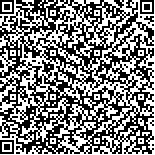| 本文已被:浏览次 下载次 |

码上扫一扫! |
|
|
|
| Research on acceleration mechanism of abrasive in pre-mixed abrasive water-jet based on iterative algorithm |
|
ZUO Weiqin1,2, WANG Xiaochuan2, HAO Fuchang1, LU Yiyu3, LIU Mingju1
|
|
(1.State Key Laboratory Cultivation Base for Gas Geology and Gas Control, Henan Polytechnic University, Jiaozuo 454000, China;2.Hubei Key Laboratory of Waterjet Theory and New Techonology,Henan Polytechnic University,Wuhan 430072, China;3.State Key Laboratory of Coal Mine Disaster Dynamics and Control, Chongqing University, Chongqing 400030, China)
|
| Abstract: |
| It has been reported that the resistance coefficient was treated as constants and the basset acceleration force was often ignored on the acceleration mechanism of abrasive in pre-mixed abrasive water-jet. Aiming at this issue, the contrast analysis of real-time interpolation method were used to analysis the viscous resistance coefficient and the influence of basset force on the abrasive acceleration was considered. And the differential equation of motion for abrasive was established, which was solved by the iterative algorithm. The research results show that the forces acting on abrasive from large to small is as follows:viscous resistance, basset acceleration force, and apparent mass force in the high pressure pipe and the straight line segment of nozzle. The forces acting on abrasive from large to small is as follows:pressure gradient force, apparent mass force, viscous resistance, and basset acceleration force in the convergence segment of nozzle, in which the basset acceleration force plays an important role in the whole course. The acceleration of abrasive is faster than liquid in front half part of the convergence segment. However, in behind half part of the convergence segment the acceleration of abrasive is slower than liquid, and abrasive accelerates slowly in the straight line segment. |
| Key words: premixed abrasive jet acceleration mechanism basset acceleration force iterative algorithm |
|
|